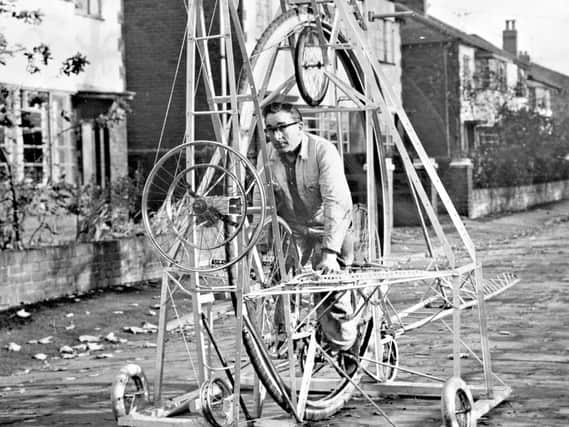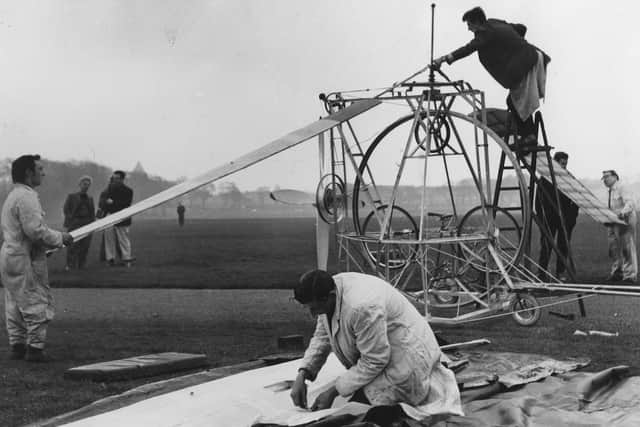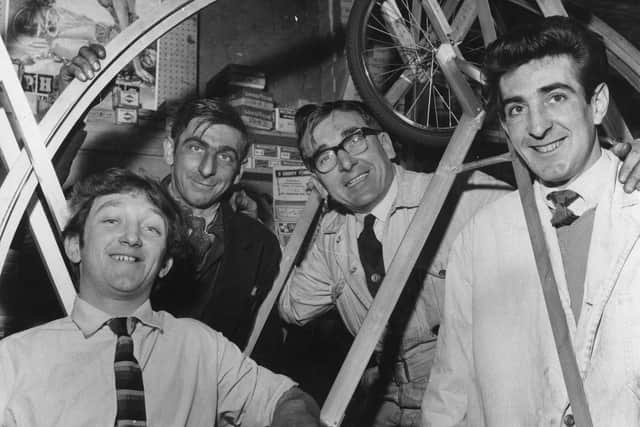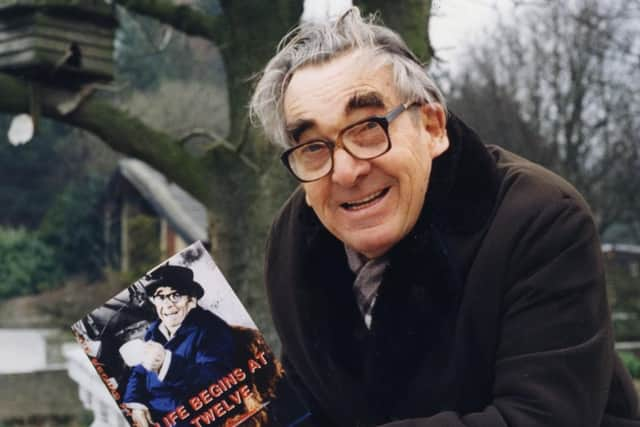Preston eccentric and his flying machine


Willie Wilson was a bit of a local character in Preston. from the 1960s through to the 1990s.
Never far away from what was going on in the city, he was the type of person who rolled up his sleeves and got stuck in.
Advertisement
Hide AdAdvertisement
Hide AdBorn in 1926 and known locally for his boundless energy and enthusiasm for life, Willie made the news on more than a few occasions,


In 1965, Willie attempted to win the £5,000 prize for becoming the first person to fly on mile under their own power.
At the time he ran a bicycle shop in Ribbleton, and he used many bike parts to build his flying machine. He called his machine the ‘Gyro-Bike’. Unfortunately, he did not achieve the results he wanted, but the fact he tried tells you the type of man Willie, whose real name was Bob, was.
But life for Willie at the beginning was far from easy, spending most of his childhood in a hospital bed and surviving a series of different medical problems, including tuberculosis and meningitis.
Advertisement
Hide AdAdvertisement
Hide AdWillie was 12 when he finally left the hospital after years of being cared for, hence the name of his autobiography ‘Life begins at Twelve’.


He would later recall, “I was very ill as a child and my brothers would push me around in a wheelchair until I was well enough to go home. That was a wonderful moment. That’s when life began for me because I had missed so much. I didn’t have the same memories many do of their school days.”
Even the name of his own autobiography gives you an indication of the type of man Willie became, somebody who wouldn’t let limitations get in the way of his interests or ambitions. The time spent in the hospital as a child resulted in Willie not being able to read or write, but this wasn’t going to stop this Lancastrian from achieving what he wanted to.
In a life filled with inventions, entrepreneurship and adventure, it would have been easy to feel like the whole world was against him but that wasn’t the attitude Willie had.
Advertisement
Hide AdAdvertisement
Hide AdIn May 1969, Willie, then 43 years old, was on the front page of the Lancashire Post for his participation in one of the most talked-about races of that era.


The Daily Mail Trans-Atlantic Air Race was dubbed ‘the greatest air race ever held’, and as a challenge seemed like a match made in heaven for somebody with Willie’s mindset.The race was a celebration to commemorate the 50th anniversary of the first successful transatlantic crossing in June 1919, one of the most important feats of the early 20th century.
British aviators John Alcock and Arthur Brown flew a modified heavy bomber aircraft from the First World War, a Vickers Vimy, and became the first people to cross the Atlantic Ocean in the air.
The Daily Mail Transatlantic Air Race was held between May 4 and 11, 1969, and was an open event to see who could make it from the top of the General Post Office Tower in central London to the top of the Empire State Building in New York, or vice-versa for the American competitors starting in the Big Apple.
Advertisement
Hide AdAdvertisement
Hide AdAlthough called an air race, the event was split up into many different categories, allowing amateurs and professionals to compete separately from one another, with the different legs of the race being treated as separate runs.
The race included shortest overall time, scheduled chartered flights and light aircraft sections for both male and female pilots.
Preston’s Willie Wilson competed in the scheduled chartered flight section of the race, and finished with a respectable overall time of 25 hours 53 minutes for both legs combined. Willie used a combination of motorcycle relays, of which there were 10 altogether, and a commercial jetliner. Willie was one of a select few of runners who did both legs of the race.
As reported by the Post at the time, “Preston’s ‘Willie’ Wilson ended his run in the great air race today out of breath, clutching a bottle of champagne and hopping mad. “Willie – real name, Mr R.A Wilson – panted up the GPO in London to the finish line after his two-way Atlantic trip, and claimed that scheduled airline flight delays had added about one-hour-and-a-half hours to his trip.
Advertisement
Hide AdAdvertisement
Hide Ad“He said: ‘I could have knocked spots off a lot of competitors, I’m going to complain. I had the fastest motorcyclist in New York. I just shut my eyes and said a prayer – and we made it. But we had to wait about an hour after the scheduled departure time because the plane wasn’t ready’.”
On the day there were many other celebrity runners, with the competition garnering much more publicity than anticipated. The first competitor to leave London to New York leg was Anne Alcock, the niece of Sir John Alcock, one half of the ground-breaking transatlantic duo of 1919.
Starting at the top of the General Post Office tower, Anne got the race underway and dashed straight down to the ground floor, where a car waiting for her had its engine running like it was on a bank job, ready to whisk the robbers away.
Other contestants included Mary Rand, a gold medal Olympian and a legendary figure in the world of track and field, who was a pioneer for British female athletics, and to this day remains the only British female athlete to win three medals in one Olympic games, Tokyo 1964.
Advertisement
Hide AdAdvertisement
Hide AdSheila Scott, the pioneering aviator, who was already world famous for her long list of more than 100 solo accomplishments, navigated a solo flyover and reached New York with a total time of 26 hours 34 minutes, winning £1,000 prize money and being the winner of the light aircraft women’s category.
The Royal Navy and Royal Air force entered three ‘runners’ each. The fastest time for the Navy was Lieutenant Commander Peter Goddard, who flew in a McDonnell Douglas Phantom in a time of six hours 11 minutes on the New York to London route.
But the overall winning time came from Royal Air Force’s Squadron Leader Tom Lecky-Thompson, who flew a Hawker Siddeley Harrier from a car park in the centre of London to New York City harbour.
Lecky-Thompson finished the race in a time of five hours 11 minutes on the London to New York route. Although the armed forces completely obliterated the rest of the pack, the real winners of the race were undoubtedly the amateur runners like Preston’s Willie Wilson. People who have a type of spirit that is unshakable and craves adventure.
Advertisement
Hide AdAdvertisement
Hide AdAs written on the day, Willie’s final comment is a typical Lancastrian understatement, “Wearing Preston North End colours – with a Union Jack sleeve on one arm and the stars and stripes on the other – Mr Wilson finally leapt into the lift that whizzed him up the GPO Tower to the finish line. His return trip time: eight hours 42 minutes and 64 seconds. And his final comment: ‘It certainly is a challenge’.”